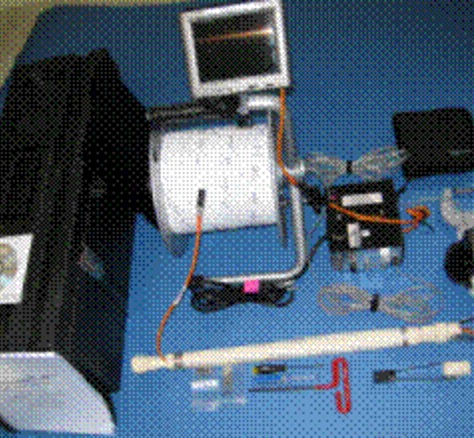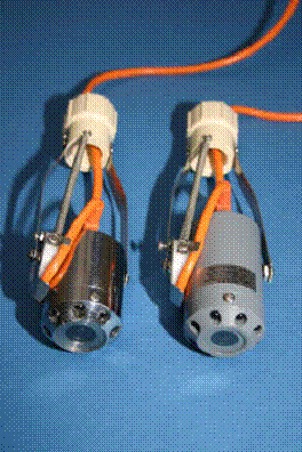Full Service Direct Imaging
Stock Drilling Inc., is proud to provide: LIF, MIP, MIHPT, EC, and HPT Direct Imaging Services.
UVOST® LIF by Dakota Technologie
UVOST® LIF efficiently delineates petroleum, oil, and lubricant (POL) contaminants in the subsurface.
All the usual forms of POLs, including; gasoline, diesel fuel, jet fuel, and hydraulic fluids, can be detected via the fluorescence response of their polycyclic aromatic hydrocarbon (PAH) constituents. The fluorescence signal scales proportionally with NAPL concentration.
UVOST struggles to detect high-PAH content NAPLs such as tars, bunkers, etc.
UVOST’s LIF technique, in conjunction with direct push deployment, yields a detailed three-dimensional map of the NAPL distribution, in real time – offering a true “seek and find” adaptive site characterization capability as promoted by U.S. EPA’s TRIAD approach.
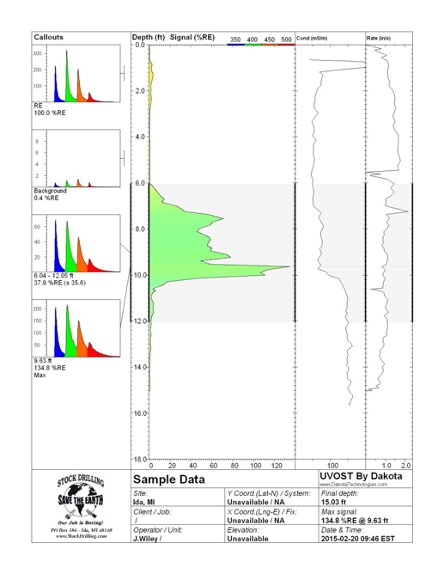
Major Benefits of UVOST®
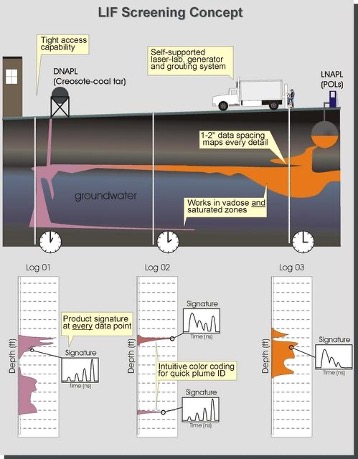
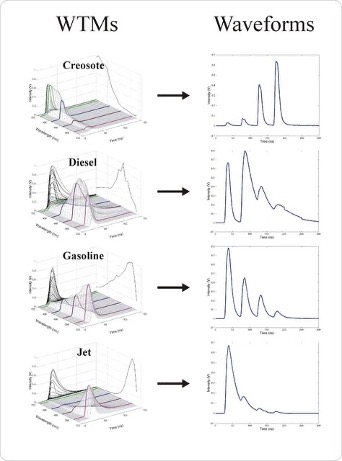
Electrical Conductivity (EC)
EC logs are used to define zones of lower conductivity, equivalent to coarser grained, more permeable sediments, which will allow the movement of contaminants (hydrocarbons, chlorinated VOCs, or metals) in the subsurface. The lithologic information gathered with the Conductivity System can be used to aid the investigator in understanding the movement and location of contaminants in the subsurface. This information will also assist in the proper placement of monitoring or extraction wells.


MIP by Geoprobe®

MIHPT
The new probe detects volatile contaminants with the MIP, measures soil electrical conductivity with a standard (MIP) dipole array, and measures HPT injection pressure using the same down-hole transducer as the Geoprobe® stand-alone HPT system. In post-processing the log data with Geoprobe® DI Viewer software, the user is able to estimate hydraulic conductivity (K) and water table elevation, as well as prepare graphical outputs of the log data.
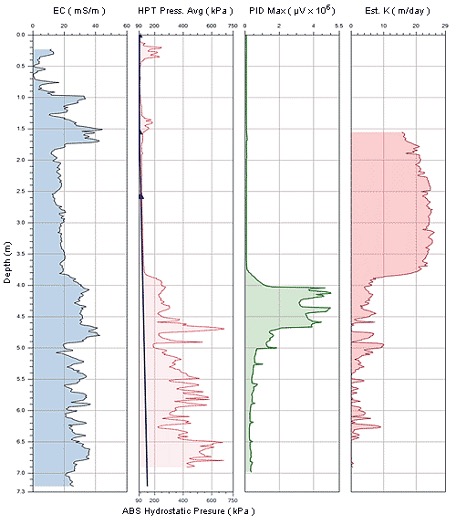

Low Level MIP
Low Level MIP (LL MIP) is a technology developed by Geoprobe Systems® that greatly increases the sensitivity (and therefore utility) of the MIP logging tool. The primary feature of LL MIP technology is that the carrier gas stream that sweeps the internal surface of the MIP membrane is pulsed. This results in an increase in the concentration of VOC contaminant delivered to the MIP detectors.
Low Level MIP can be performed with standard MIP probes, MiHpt probes or with MIP-CPT probes. To perform this method an operator will need to add the MP9000 Pulse Flow Controller along with an updated version of the FI6000 acquisition software to the current MIP system. The addition of the MP9000 to the system is simple and requires only the rearrangement of gas line connections. This controller can then be easily removed from the system to return to standard MIP logging. Switching between methods requires only a few minutes of time.
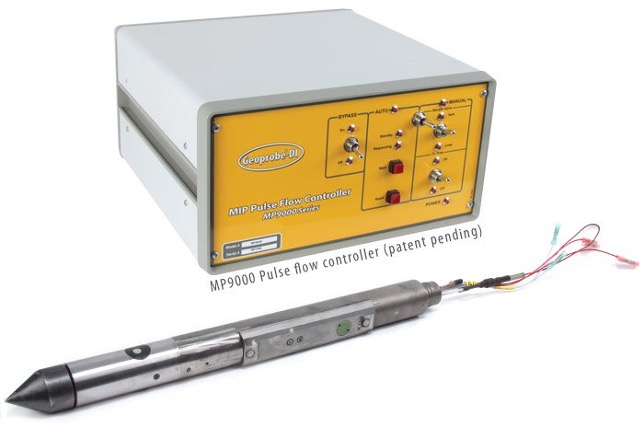
Hydraulic Profiling Tool (HPT)
The Hydraulic Profiling Tool (HPT) allows the user to create fast, continuous real-time profiles of soil hydraulic properties in both fine- and coarse-grained material. The HPT uses a sensitive, downhole transducer to measure the pressure response of the soil to injection of water. One primary use of this tool is to locate and define preferential migration pathways for contaminants in the subsurface. It can also be used to target zones for injection of remediation material. In addition, the HPT can be used to select well screen intervals, evaluate locations to conduct slug tests, and measure static water conditions across a site.
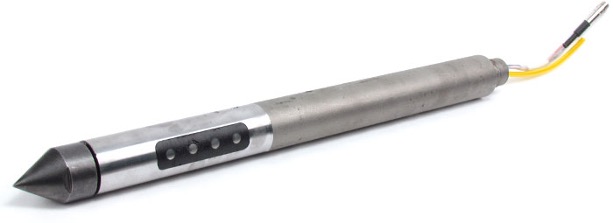
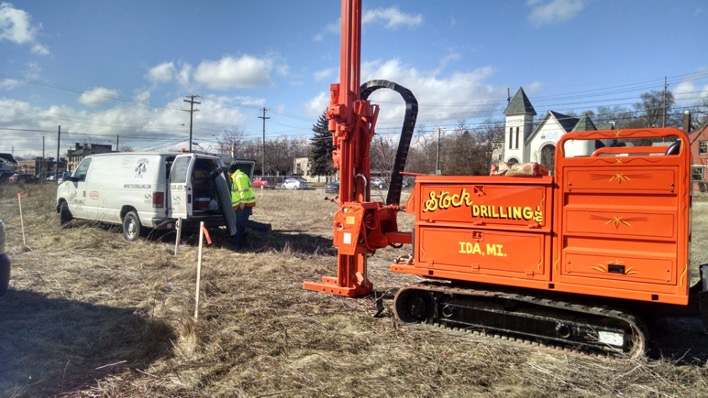
HPT-GW Sampler
The HPT-GW Sampler represents a unique combination of Geoprobe’s HPT logging and groundwater sampling technologies. This direct push logging/sampling tool is 2.25 inches (57mm) in diameter and is driven using 2.25 in. probe rod.
In the logging mode, this tool will collect HPT (Hydraulic Profiling Tool) and EC (Electrical Conductivity) logs as it is driven to depth in unconsolidated formations.
The tool can then be stopped at intervals selected by the user and groundwater sampling can be performed using the bladder pump incorporated into the tool.
The HPT function of this tool is essentially the same as used in other Geoprobe® HPT tools; a down hole transducer is used to record the pressure required to inject a measured flow of water into the formation as the tool is advanced to depth. In the case of the HPT-GW Sampler the typical injection flow rate is 500 ml/min. The HPT log can be used to determine hydrostatic pressure (and thus predict position of the water table) and to estimate formation hydraulic conductivity.

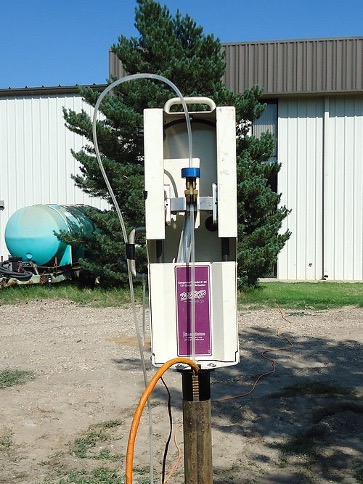
OIP/OIHPT- Optical Imaging Profiler
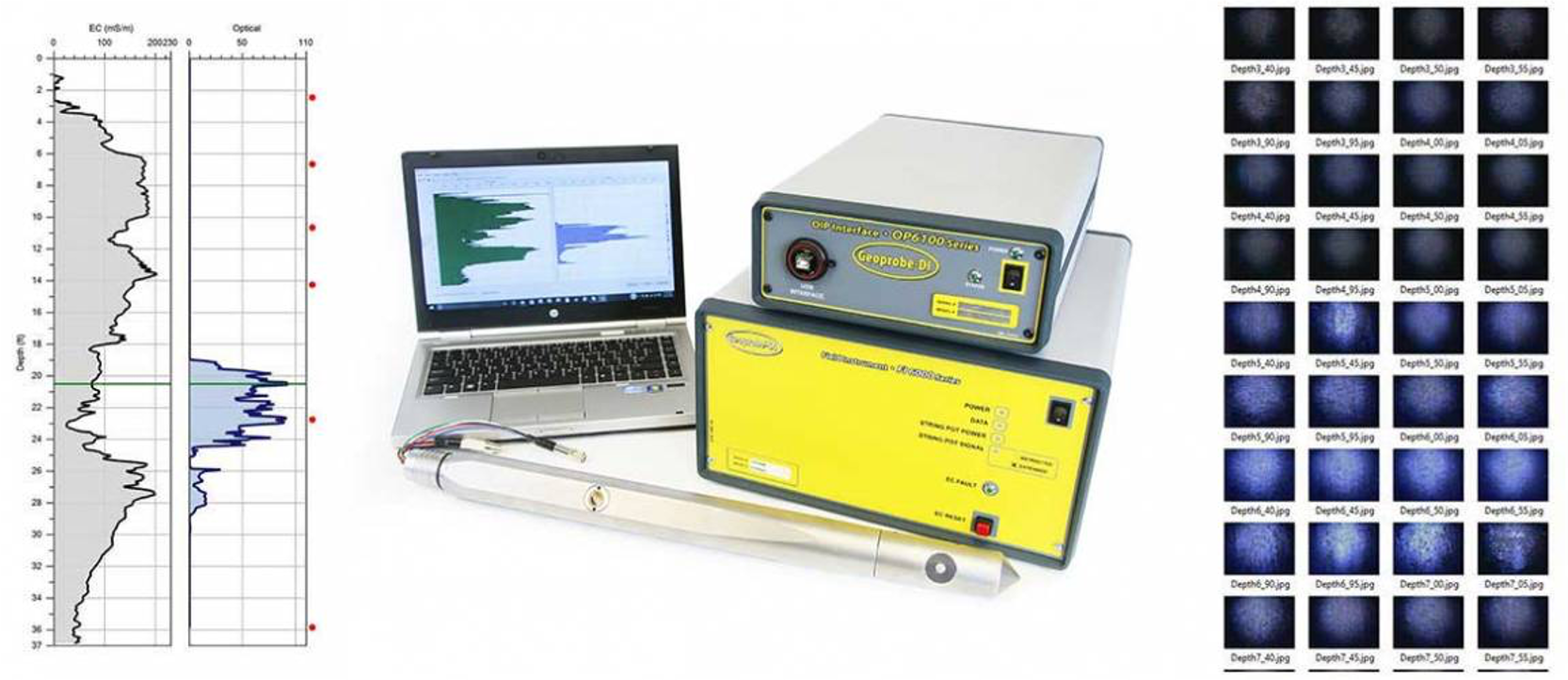
Direct Image Viewer
DI Viewer is the display log software from Geoprobe Systems®, which can display and print EC, MIP, HPT, and CPT logs as well as MIP response and HPT dissipations & static water level data. This release adds support for the new log format used by the FI6000
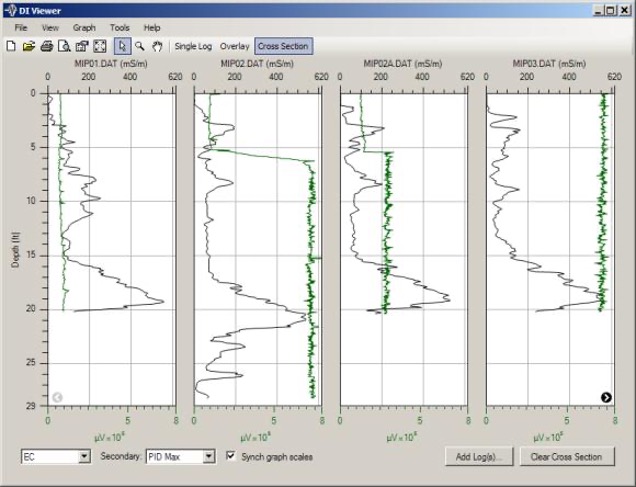
Century System VI Gamma Logging

System VI Probe Attachments:
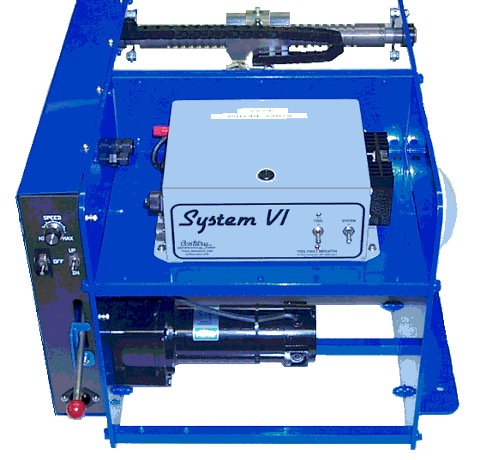
GeoVision HD Bore Hole Camera
